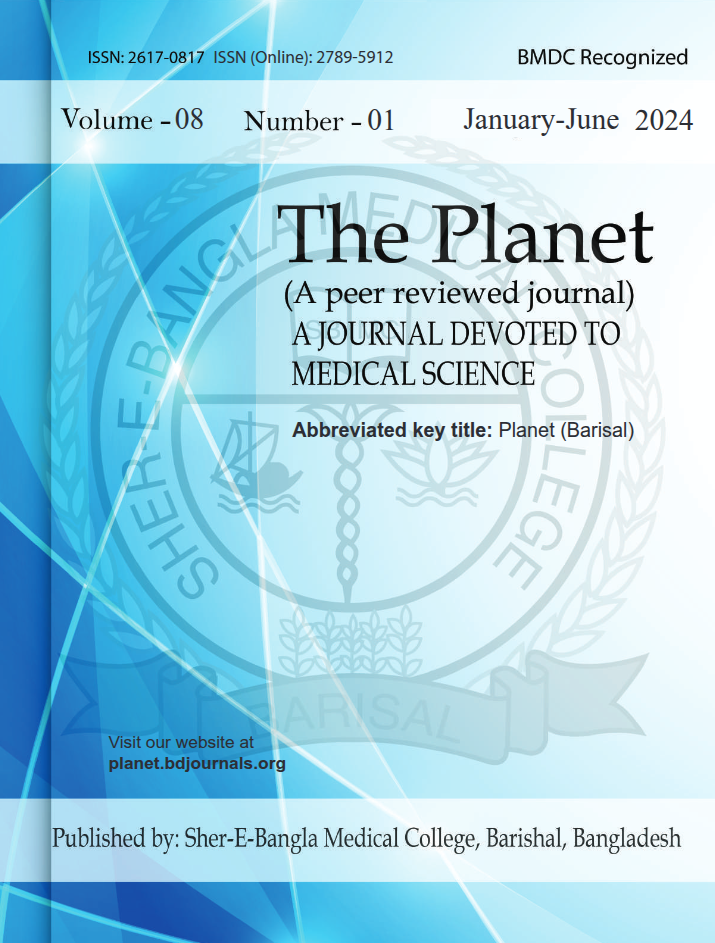Correlation between Laparotomy Findings and Histopathological Diagnoses in Non-Traumatic Ileal Perforation
Publiée 2024-03-17
Mots-clés
- Non-Traumatic Ileal Perforation,
- Histopathological Diagnoses,
- Laparotomy Findings
(c) Copyright The Planet 2024

Ce travail est disponible sous la licence Creative Commons Attribution 4.0 International .
Comment citer
Résumé
Background: Non-traumatic ileal perforation is a significant cause of acute abdomen requiring urgent surgical intervention, especially in developing countries. It commonly results from infectious, inflammatory, or idiopathic etiologies, with typhoid fever and tuberculosis being among the most prevalent causes. This study aims to evaluate the correlation between laparotomy findings and histopathological diagnoses in a cohort of patients undergoing surgery for NTIP. Methods & Materials: This study is a prospective observational conductd on the patients admitted through outpatient department and emergency of Dhaka Medical College Hospital, which took place from January 2018 to December 2018. A total of 60 patients were selected as study subjects. Data were analyzed using SPSS version 24.0. P value reached from Z- test. Significant difference at 95% confidence interval. Result: Clinically, all presented with abdominal pain, tenderness, dehydration, and rigidity; 66.67% had fever, 65% had constipation, and 85% showed absent bowel sounds. Laparotomy revealed distal ileal perforation in 65% and proximal in 31.67%, with mesenteric lymphadenitis in 70% and floating omentum in 73.33%. Histopathology confirmed typhoid ulcers in 58.33%, tubercular ulcers in 13.33%, non-specific ulcers in 21.67%, and Meckel’s diverticulum and Crohn’s disease in 3.33% each (p<0.001). Conclusion: This study highlights a significant correlation between laparotomy findings and histopathological diagnoses in cases of non-traumatic ileal perforation. The majority of distal ileal perforations were histologically confirmed as typhoid ulcers, with statistical significance (Z = 4.725, p < 0.001), indicating that intraoperative findings can reliably predict the underlying pathology.



